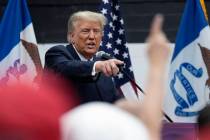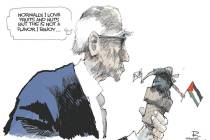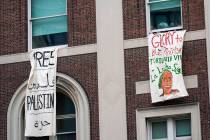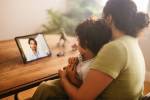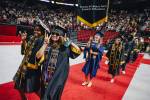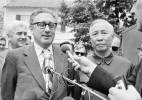Acupuncture article did not explore sanctioned medical practices
I am writing to express my dismay over the inflammatory rhetoric and inaccurate reporting in the two recent articles by Paul Harasim highlighting acupuncture in the Las Vegas Valley. Besides the ongoing dismissive, biased and derisive tone used to describe acupuncture, Mr. Harasim has misrepresented many of the facts, both directly and by omission.
Acupuncture has been a licensed medical profession in the U.S. for four decades. The U.S. Department of Education accredits acupuncture and Oriental medicine colleges and curricula through the Accreditation Commission for Acupuncture and Oriental Medicine. As such, standards and procedures have been in place regarding patient safety, overseen by the federal government as well as state licensing boards and health agencies.
It was ridiculous of Mr. Harasim to suggest that Dr. (Farolyn) McSweeney or the Nevada State Board of Oriental Medicine has forged their own path regarding patient health standards. There is a standardized course all acupuncture students must take called “Clean Needle Technique,” CNT, and practical proficiency exams required for certification in CNT and licensure. CNT is scrupulous in its requirements and includes OSHA and CDC standards as patient safety is the primary concern for all medical professionals.
Gloves are neither suggested nor required in this course for standard acupuncture practice. Why? Because acupuncture rarely results in any blood exposure. Acupuncture needles are removed with either a long-handled swab or a cotton ball to cover the insertion point at removal. Any tiny amount of blood that very occasionally may be present there ( even with patients on blood thinners!) will be absorbed by the cotton and then discarded. Needle disposal is only in specialized sharps containers that minimize any exposure to used needles.
“Universal Precautions,” a term that Mr. Harasim references often but never defines in his article, maintains that gloves are to be worn “when touching blood and body fluids, mucous membranes and non-intact skin of all patients.” Acupuncturists are not in that category of health care provider — there is no reason we would expect to be touching blood, mucous membranes or non-intact skin (such as a surgeon would), and therefore gloves are not necessary. But the primary fact to remember here is that needles are sterile and disposable — after use on the patient, they are discarded in proper fashion as mentioned above.
Even an accidental needle stick would not endanger a patient — as no doctor would accidently stick herself and then use that needle on a patient. Furthermore, gloves would not prevent such an occurrence. As the Centers for Disease Control says, “They cannot prevent penetrating injuries due to needles or other sharp instruments.” Mr. Harasim crows about “80 people worldwide contracting hepatitis B through acupuncture” but omits the rest of the information regarding that statistic: that number is the sum total of cases accrued around the world since 1970.
And, he fails to report the consensus among all public health organizations: “Many serious adverse events are not intrinsic to acupuncture but rather to bad practices (such as improper needling or unsterile needles), which may be why such complications have not been reported in surveys of adequately-trained acupuncturists.” (Ernst. E et al Pain), and “serious adverse events are exceedingly rare — on the order of five in one million” (Journal of the British Medical Acupuncture Society), and nearly always associated with untrained practitioners. Mr. Harasim’s suggestion that Dr. McSweeney and other Nevada doctors are operating outside the bounds of safe practice was insulting and wrong.
Mr. Harasim makes many references and quotes other speakers to say that evidence is scant as to acupuncture’s effectiveness. Quite the opposite is true. In fact, the results of a recent meta-analysis of studies involving 18,000 patients done by researches at Memorial Sloan-Kettering in New York found that acupuncture was more effective than both conventional treatment such as pain relief medications and “sham” acupuncture (not real treatment but rather a way to randomize treatment groups for the sake of comparison and study accuracy.)
Many high quality studies have been published in respected journals of Western medicine showing effectiveness of acupuncture in treating a wide range of health issues. The NIH and the WHO note acupuncture practice as a cost-effective way to deliver high quality health care to communities around the world.
Many insurance companies, including United Healthcare, Blue Cross, Aetna and Cigna have policies that do indeed cover acupuncture, and these policy decisions at high levels have been based on the overwhelming evidence that acupuncture can treat many varied health issues effectively and with low risk. I would have expected a journalist like Mr. Harasim to have made an effort to look into the veracity of the information and quotations he prints.
Over thousands of years and still today, billions of people have relied on acupuncture and other Oriental medical techniques as a primary form of health care simply because it IS safe and effective and has proven itself so over these many generations. Mr. Harasim has failed to note that obvious fact.
Sharon Roth, Doctor of Oriental Medicine, graduated from the Pacific College of Oriental Medicine, San Diego, in 1997, and practices acupuncture in Las Vegas. She served on the Nevada State Board of Oriental Medicine from 2001-2005.








